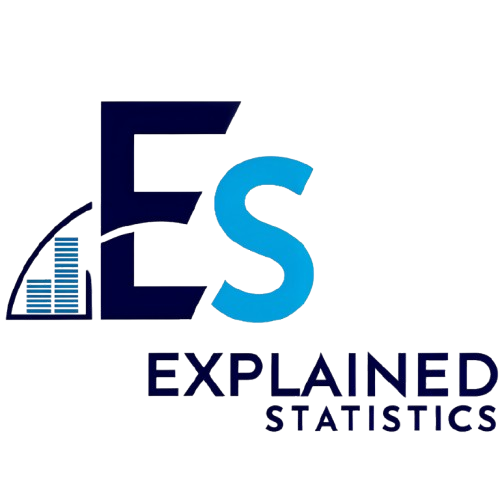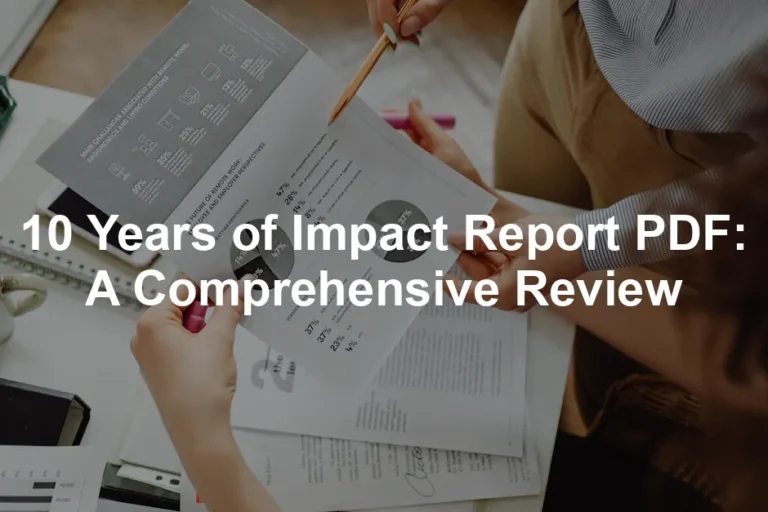Introduction
Have you ever wondered how students truly feel about their learning experiences? Panorama surveys are here to shed light on this important question. These surveys gather student feedback, allowing schools to understand perceptions about teaching and learning.
The trend of utilizing surveys for student insights is on the rise. Schools are increasingly embracing this method to enhance education. This blog post will explore the benefits, methodologies, and practical implementations of panorama surveys in educational settings.
Speaking of enhancing education, if you want to dive deeper into improving classroom engagement, consider checking out this Classroom Engagement Strategies Book. It’s packed with ideas that will have your students engaged and excited to learn!
Summary and Overview
So, what exactly are panorama surveys? In simple terms, they are tools designed to collect feedback from students about their educational experiences. Over time, the use of these surveys has evolved significantly in educational contexts.
Key stakeholders include students, teachers, and administrators. Each group plays a vital role in the feedback loop. Feedback is crucial for driving improvements within schools. It helps identify areas that need attention and fosters a culture of continuous growth.
In this article, we will cover the importance of panorama surveys, their components, and how to effectively implement them in schools.
To ensure your school is prepared for effective feedback collection, consider using a Data Analysis Software. It can streamline the feedback process and provide insightful analytics!

Understanding Panorama Surveys
What is a Panorama Survey?
A panorama survey is a structured feedback tool tailored for educational environments. Its primary purpose is to gather student perceptions on various aspects of their schooling.
These surveys consist of multiple components, including questions on classroom climate, safety, and engagement. Each question aims to capture a different facet of the student experience. Understanding these perceptions is essential for schools striving to improve teaching and learning.
By measuring student feedback, schools can gain valuable insights into their educational environment. This understanding can lead to actionable changes that positively impact student success.
Speaking of actionable changes, a great resource for understanding classroom climate is the Classroom Climate Improvement Guide. It offers strategies to create a positive and inclusive environment.
Importance of Student Feedback
Student feedback plays a vital role in school improvement. It provides insights into how students perceive their learning environments. When schools listen to students, they can understand what works and what needs changing. This feedback is essential for fostering a supportive educational atmosphere.
Research shows a strong link between student perceptions and learning outcomes. Studies indicate that when students feel valued and safe, their academic performance improves. Positive feedback enhances engagement and motivation. In fact, schools that actively seek student input often report higher achievement levels.
Participation rates in surveys are crucial. Statistics reveal that schools with higher student participation see greater improvements in academic outcomes. For instance, when 25% or more of students participate, the feedback becomes more representative. This ensures that decisions based on survey results reflect the broader student body’s needs.
If you’re looking for ways to boost participation, consider implementing a Rewards and Incentives System. It can motivate students to provide their valuable feedback!

Key Components of Panorama Surveys
Constructs Measured
Panorama surveys measure several key constructs, including school climate, safety, and engagement. Each construct is vital for creating a positive educational experience.
School climate refers to the overall atmosphere within a school. A positive climate fosters inclusivity and respect among students and staff. Safety, both physical and emotional, is crucial for effective learning. When students feel safe, they are more likely to participate actively.
Engagement measures how invested students are in their classes. High engagement levels correlate with better academic performance. By assessing these constructs, schools can identify strengths and areas for improvement.
To better understand engagement, consider reading the Student Engagement Activities Book. It’s filled with activities designed to keep students motivated and involved!

Survey Design and Methodology
The methodology behind panorama surveys is robust. Designed by experts, these surveys undergo a rigorous process. This includes piloting questions and refining based on feedback. Cognitive interviews with students help ensure clarity and relevance.
Research supports the survey design, confirming its reliability. Experts review the questions to guarantee they accurately measure perceptions. This thorough approach ensures that the surveys yield valid data useful for school improvement.
Customization and Flexibility
Panorama surveys offer excellent customization options. Schools can tailor surveys to address specific needs and topics. This flexibility allows educators to focus on what matters most to their communities.
With over 800 questions available, schools can choose relevant topics. Additionally, translations are provided in multiple languages. This ensures that non-English speaking students can participate meaningfully. By accommodating diverse populations, schools enhance inclusivity and engagement.
For educators looking to deepen their understanding of research methodologies, the Educational Research Methodologies Book is a must-read. It provides insights into effective research practices in education.

Implementation of Panorama Surveys
Administering the Surveys
Administering panorama surveys in schools is a well-structured process. Typically, the surveys are conducted online or via paper, depending on school preferences. Schools usually schedule a dedicated period for survey completion. This can last from a few days to a couple of weeks. Timing is crucial; surveys should be administered when students are most available and focused.
To maximize participation, schools can promote the survey in various ways. Announcements in classrooms, emails to parents, and social media posts can all raise awareness. Offering incentives, like small rewards or recognition for classes with high participation, often boosts engagement. Ensuring anonymity is vital, as it encourages honest feedback. Make sure to remind students that their responses will guide improvements.
A Mobile-Friendly Survey Tool can make this process even smoother. Students can fill out surveys on their personal devices, making participation easier than ever!

Analyzing Survey Results
Once the surveys are completed, the data analysis begins. Schools compile responses and utilize statistical methods to interpret the results. This analysis helps identify trends and highlights areas needing attention. Educators often seek patterns in responses to understand student sentiments better.
Data visualization tools can significantly aid in presenting findings. Graphs, charts, and dashboards make complex data more digestible. This visual approach allows educators to quickly grasp key insights and share results with staff and stakeholders.
Using this data for informed decision-making is essential. Schools can develop targeted action plans based on feedback. For instance, if students indicate a lack of engagement in specific subjects, schools can adjust teaching methods or provide additional resources. Tips for effective data analysis in economics and statistics can aid schools in interpreting their survey results.
If you’re looking for tools to facilitate data visualization, check out some Data Visualization Tools that can make your findings pop!

Case Studies and Testimonials
Several schools have successfully implemented panorama surveys, leading to noteworthy improvements. For example, a district in California reported enhanced student-teacher relationships after analyzing survey feedback. They established programs focused on building these connections, resulting in higher student satisfaction.
Another school in Texas utilized survey data to address mental health needs. By understanding student concerns, they implemented support systems that significantly improved the overall well-being of their students.
Speaking of mental health, consider exploring Mental Health Support Resources that can help schools create a nurturing environment for students.

Challenges and Considerations
Addressing Privacy Concerns
Data privacy is crucial in student surveys. Ensuring confidentiality helps build trust between students and schools. When students know their responses are protected, they feel safe sharing their thoughts. Schools must adhere to legal requirements like FERPA to safeguard student information.
To protect this data, schools often anonymize responses. This means no personal identifiers are linked to feedback. Furthermore, secure data storage methods are employed to prevent unauthorized access. Regular training for staff on data privacy is essential. These measures help maintain a respectful and secure environment for student voices.

Potential Biases in Survey Responses
Survey responses can be influenced by various biases. For instance, students may respond in a way they think is expected, rather than honestly. This can skew results and affect decision-making. To minimize this, schools should encourage openness and reassure students about anonymity.
Using representative sampling is key in survey administration. This means ensuring all demographics are included, reflecting the entire student body. Schools should aim to gather input from diverse groups to obtain a complete picture. This approach leads to more accurate insights and better-informed decisions based on feedback.

Future of Panorama Surveys
Innovations in Survey Design
The future of panorama surveys is bright, with exciting innovations on the horizon. Emerging technologies are changing how surveys are designed and administered. For example, mobile-friendly formats are becoming more common. This allows students to participate easily, increasing response rates.
Artificial intelligence is also playing a significant role. AI can analyze responses quickly, identifying trends and patterns that may not be immediately apparent. Additionally, data analytics help schools tailor surveys to better meet their needs. As technology evolves, so will the effectiveness of panorama surveys, ultimately enhancing student success.

If you’re curious about the role of AI in education, check out the AI in Education Book. It provides insights into how AI can enhance the learning experience.
Expanding Applications
Panorama surveys are gaining traction beyond K-12 education. Imagine how these surveys could transform higher education. Colleges and universities face unique challenges. Gathering student feedback can guide curriculum improvements and enhance campus life.
In higher education, panorama surveys can assess student satisfaction. They can reveal insights about teaching effectiveness and campus resources. This feedback helps institutions adjust programs to better meet student needs. By understanding the student experience, schools can create supportive environments that boost retention.
Community feedback is another exciting application. Schools can share results with local stakeholders. This fosters collaboration between educators and community members. Engaging with parents and local organizations strengthens relationships. It encourages a shared commitment to student success.
By implementing panorama surveys, institutions can gather diverse perspectives. This approach leads to informed decisions that benefit students, educators, and communities alike. The potential for expansion is vast, making panorama surveys a valuable tool for the future.

Conclusion
In summary, panorama surveys play a crucial role in education. They provide valuable insights into student perceptions, helping schools improve. By gathering feedback, educators can address concerns and enhance the learning environment.
Implementing panorama surveys can lead to significant improvements in educational outcomes. They empower schools to make data-informed decisions. Schools and educators are encouraged to consider these surveys. Doing so can foster a culture of continuous growth and development.
And speaking of continuous growth, if you’re looking for some excellent professional development resources, don’t miss the Professional Development Courses for Teachers. They can help you stay at the top of your teaching game!
FAQs
What are panorama surveys?
Panorama surveys are structured tools that gather student feedback. They measure perceptions of teaching, learning, and school climate.
How can schools benefit from implementing panorama surveys?
Schools benefit by gaining insights into student experiences. This feedback informs improvements in teaching and school culture.
Are panorama surveys confidential?
Yes, panorama surveys prioritize student privacy. They ensure that responses are anonymous and secure.
How often should panorama surveys be conducted?
Best practices suggest conducting surveys annually. This frequency allows for consistent feedback and ongoing improvements.
Can panorama surveys be customized for different grade levels?
Absolutely! Panorama surveys can be tailored to meet the needs of various educational settings. Schools can select relevant topics and questions.
Please let us know what you think about our content by leaving a comment down below!
Thank you for reading till here 🙂
Understanding the importance of statistics for healthcare professionals on workplace safety 2024 is crucial for schools to ensure a safe learning environment.
All images from Pexels




